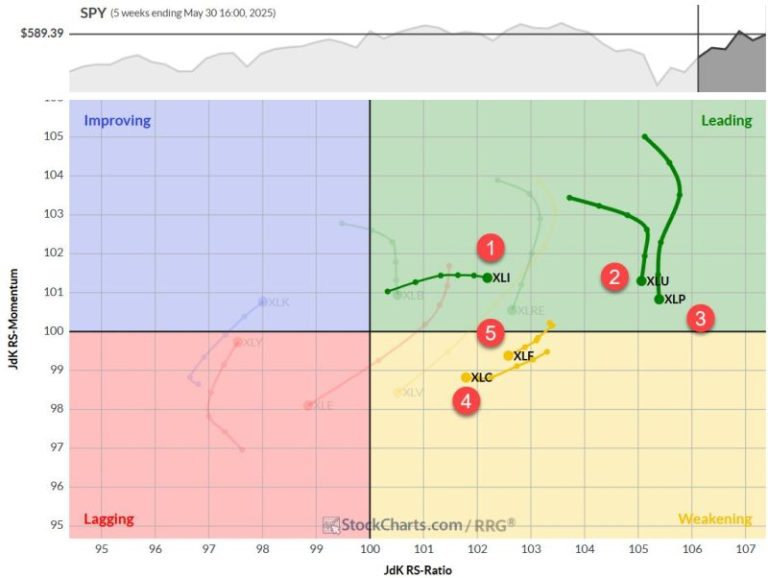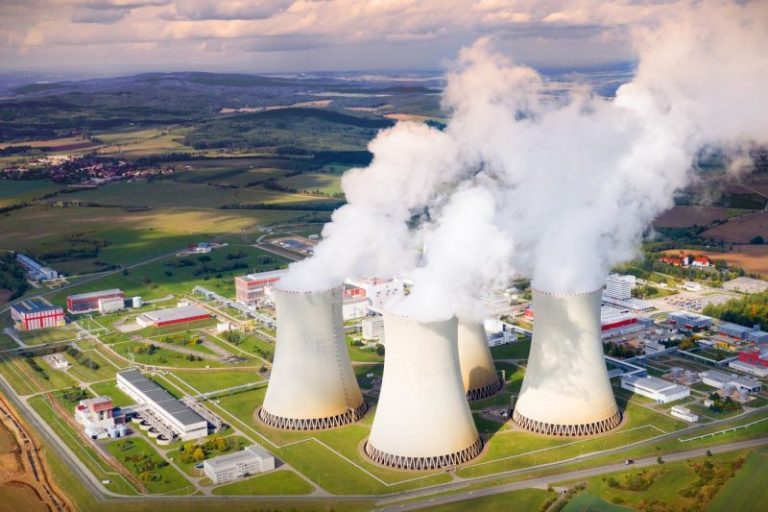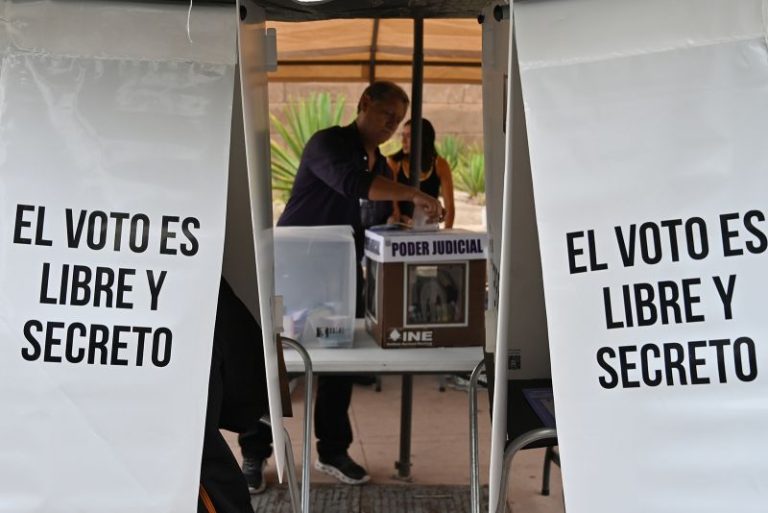Global uranium production has experienced significant fluctuations over the past decade.
After peaking at 63,207 metric tons in 2016, global uranium output declined over the subsequent years as many uranium mines were rendered uneconomic by persistent low spot prices due to factors such as oversupply and lower demand following the 2011 Fukushima disaster. In 2022, world uranium production totaled just 49,355 metric tons.
However, the uranium market started turning around in 2021, leading uranium miners to begin restarting production at their mines in recent years. In early 2024, prices surged to a 17 year high of US$106 per pound, driven by a growing global commitment to nuclear energy as a low-carbon power source and supply concerns from major producers like Kazakhstan’s Kazatomprom (LSE:KAP,OTC Pink:NATKY).
Currently, 10 percent of the world’s electricity is generated by nuclear energy, and that number is expected to grow. Looking forward, analysts are calling for a sustained bull market in uranium.
Prices have since stabilized around US$70 per pound as of mid-2025, and the market remains bullish due to a persistent supply-demand imbalance.
Because of uranium’s significance in nuclear fuel production and energy generation, it’s important to know where uranium is mined and which nations are the largest uranium-producing countries. Kazakhstan is the leader by a long shot, and has been since 2009. In 2022, the most recent year for which data is available, Canada and Namibia took second and third place, respectively, for uranium production.
For investors interested in following the uranium space, having familiarity with uranium production by country is essential. Read on to get a closer look at the largest uranium-producing countries. Data and mine information on the top 10 uranium producing countries are from the World Nuclear Association’s most recent report on uranium mine production and mining database MDO.
1. Kazakhstan
Mine production: 21,227 metric tons
Kazakhstan is the largest uranium producing country in the world, and its total output of 21,227 metric tons in 2022 accounted for an impressive 43 percent of global uranium supply.
When last recorded in 2021, Kazakhstan had 815,200 MT of known recoverable uranium resources, second only to Australia. Most of the uranium in the country is mined via an in-situ leaching process.
Kazataprom, the country’s national uranium miner, is the world’s largest producer, with projects and partnerships in various jurisdictions. News that the top uranium producer may miss its production targets for 2024 and 2025 was a large contributor to uranium prices breaking through the US$100 level last year.
One of the company’s most significant uranium operations is the Inkai in-situ recovery (ISR) mine, a 60/40 joint venture with Cameco (TSX:CCO,NYSE:CCJ). According to the mining database MDO, Inkai produced 8.3 million pounds of U3O8 in 2023.
Production at Inkai was temporarily suspended in early 2025 due to a regulatory delay that has since been rectified.
In May, Kazatomprom announced that its subsidiary’s 40 percent owned joint venture, Taiqonyr Qyshqyl Zauyty, secured US$189 million in financing from the Development Bank of Kazakhstan to build an 800,000 MT per year sulfuric acid plant in the Turkestan region. The plant is expected to be operational by Q1 2027.
2. Canada
Mine production: 7,351 metric tons
Canada’s uranium output in 2022 was 7,351 metric tons. The country’s production fell dramatically since hitting a peak of 14,039 MT in 2016 as the country’s mines closed due to low uranium prices in the late 2010s. However, uranium production in the country began to rebound in 2022.
Saskatchewan’s Cigar Lake and McArthur River are considered the world’s two top uranium mines. Both properties are operated by sector major Cameco. MDO highlights Cigar Lake and McArthur River as having uranium grades that are 100 times the world average. The company made the decision to shutter operations at the McArthur River mine in 2018, but returned to normal operations in November 2022.
In 2023, Cameco produced 17.6 million pounds of uranium — equivalent to 7,983 metric tons — which was still below its originally planned production of 20.3 million pounds for the year. However, the company’s 2024 uranium output climbed to 23.1 million pounds, beating its guidance for the year.
For 2025, the uranium major plans to produce 18 million pounds of uranium at McArthur River/Key Lake and 18 million pounds at Cigar Lake.
Uranium exploration is also prevalent in Canada, with the majority occurring in the uranium-rich Athabasca Basin in the province of Saskatchewan. The Athabasca Basin is world renowned for its high-quality uranium deposits and friendly mining attitude, and Saskatchewan’s long history with the uranium industry has helped to assert it as an international leader in the sector.
3. Namibia
Mine production: 5,613 metric tons
Namibia’s uranium production totaled 5,613 metric tons in 2022. The country’s uranium output has been steadily increasing after falling to 2,993 MT in 2015.
In fact, the African nation overtook longtime frontrunner Canada to become the third largest uranium-producing country in 2020, and went on to surpass Australia for the second top spot in 2021. Although Namibia slipped back below Canada in 2022, its output for the year was only down by 140 MT from 2021.
The country is home to three key uranium mines: Langer Heinrich, Rössing and Husab. Paladin Energy (ASX:PDN,OTCQX:PALAF) owns the Langer Heinrich mine. In 2017, Paladin took Langer Heinrich offline due to weak uranium prices. However, improved uranium prices over the past few years prompted the uranium miner to ramp up restart efforts, and Langer Heinrich achieved commercial production once again in Q1 2024.
Paladin initially forecast fiscal 2025 output of 4 million to 4.5 million pounds of U3O8, but revised it in November 2024 to 3 million to 3.6 million pounds due to inconsistent ore stockpiles and water supply issues. In March 2025, after heavy rains further disrupted operations, Paladin removed its guidance altogether. The company is now facing two class action lawsuits regarding the guidance revisions.
Rio Tinto (NYSE:RIO,ASX:RIO,LSE:RIO) sold its majority share of the Rössing mine to China National Uranium in 2019. Rössing is the world’s longest-running open-pit uranium mine, and recent expansion efforts have extended its mine life to 2036, according to MDO.
The Husab mine, majority owned by China General Nuclear, is one of the world’s largest uranium mines by output. As part of its effort to increase output, MDO reports that a pilot heap leach project is underway to assess the economic feasibility of processing lower-grade ore. The results of the pilot project are expected in 2025.
4. Australia
Mine production: 4,087 metric tons
Australia’s uranium production totaled 4,087 metric tons in 2022, down significantly from the 6,203 MT produced two years prior. The island nation holds 28 percent of the world’s known recoverable uranium resources.
Uranium mining is a contentious and often political issue in Australia. While the country permits some uranium-mining activity, it is opposed to using nuclear energy — at least for now.
‘Australia uses no nuclear power, but with high reliance on coal any likely carbon constraints on electricity generation will make it a strong possibility,” according to the World Nuclear Association. “Australia has a significant infrastructure to support any future nuclear power program.”
Australia is home to three operating uranium mines, including the largest-known deposit of uranium in the world, BHP’s (NYSE:BHP,ASX:BHP,LSE:BHP) Olympic Dam. Although uranium is only produced as a by-product at Olympic Dam, its high output of the metal makes it the fourth largest uranium-producing mine in the world. The mining database MDO reports that In BHP’s 2024 fiscal year, uranium output from the Olympic Dam operation totaled 3,603 metric tons of uranium oxide concentrate.
5. Uzbekistan
Mine production: 3,300 metric tons
In 2022, Uzbekistan was the fifth largest uranium producing country, with output of 3,300 metric tons. It entered the top five in 2020, with an estimated 3,500 MT of output. Domestic uranium production had been gradually increasing in the Central Asian nation since 2016 via Japanese and Chinese joint ventures.
Navoiyuran, which was spun out of state-owned Navoi Mining & Metallurgy Combinat in 2022 as part of a restructuring, handles all the mining and processing of domestic uranium supply. The nation’s uranium largess continues to attract foreign investment; strategic partnerships with French uranium miner Orano and state-run China Nuclear Uranium were announced in November 2023 and March 2024, respectively.
Orano also partnered with the state uranium company in 2019, forming a 51/49 joint venture, Nurlikum Mining, to develop the South Djengeldi uranium project. In early 2025, the pair was joined by Japan’s ITOCHU (TSE:8001), who acquired an undisclosed minority stake. The mine, located in the Kyzylkum Desert, is projected to produce up to 700 metric tons of uranium annually over a lifespan exceeding a decade. An exploration program aims to at least double the project’s mineral resources.
6. Russia
Mine production: 2,508 metric tons
Russia was in sixth place in terms of uranium production in 2022 with production of 2,508 metric tons. Output has been relatively steady in the country since 2011, usually coming in around the 2,800 to 3,000 MT range.
Experts had been expecting the country to increase its production in the coming years to meet its energy needs, as well as growing uranium demand around the world. But in 2021, uranium production in the country dropped by 211 MT year-over-year to 2,635 MT, and it fell by another 127 MT in 2022.
In terms of domestic production, Rosatom, a subsidiary of ARMZ Uranium Holding, owns the country’s Priargunsky mine and is working on developing the Vershinnoye deposit in Southern Siberia through a subsidiary.
In 2023, Russia surpassed its uranium production target, producing 90 MT more than expected. Rosatom is developing new mines, including Mine No. 6, which is slated to begin uranium production in 2028.
Russian uranium has been an area of controversy in recent years, with the US initiating a Section 232 investigation around the security of uranium imports from the country in 2018. More recently, Russia’s ongoing war in Ukraine has prompted countries around the world to look more closely at their nuclear supply chains.
7. Niger
Mine production: 2,020 metric tons
Niger’s uranium production totaled 2,020 metric tons in 2022, having declined year-on-year over the past decade. The African nation is home to the producing SOMAIR uranium mine and the past producing COMINAK mine, which account for 5 percent of the world’s uranium production. Both are run by subsidiaries of Orano, a private uranium miner, through majority owned joint ventures.
Global Atomic (TSX:GLO,OTCQX:GLATF) is developing its Dasa project in the country, and expects to commission its processing plant by early 2026. Niger is also home to the Madaouela uranium asset, which was the flagship project of explorer GoviEx Uranium (TSXV:GXU,OTCQB:GVXXF).
A recent military coup in the African nation has sparked uranium supply concerns, as Niger accounts for 15 percent of France’s uranium needs and one-fifth of EU imports. In January 2024, the government of Niger, now under a military junta, announced it intends to overhaul the nation’s mining industry. It has temporarily halted the granting of new mining licenses and is working to make changes to existing mining licenses in order to increase state profits.
In mid-2024, Niger’s government revoked GoviEx Uranium’s Madaouela mining license along with Orano’s operating permit for its Imouraren uranium project.
Niger granted a small-scale mining permit for the Moradi uranium project to state-owned COMIREX. The approval, issued February 22, 2025, upgrades a previous semi-mechanized license and strengthens national control over uranium resources in the Agadez Region.
8. China
Mine production: 1,700 metric tons
China’s uranium production grew to hit 1,700 metric tons in 2022, up by 100 MT over 2021. The country’s uranium production climbed during the 2010s from 885 MT in 2011 to 1,885 MT in 2018, and held steady at that level until falling to 1,600 MT in 2021.
China General Nuclear Power, the country’s sole domestic uranium supplier, is looking to expand nuclear fuel supply deals with Kazakhstan, Uzbekistan and additional foreign uranium companies.
China’s goal is to supply one-third of its nuclear fuel cycle with uranium from domestic producers, obtain one-third through foreign equity in mines and joint ventures overseas and purchase one-third on the open uranium market. China is also a leader in nuclear energy; the Chinese mainland has 56 nuclear reactors with 31 in construction.
In May 2025 Chinese scientists announced successful results from their newly developed method of extracting uranium from seawater, which uses hydrogel beads made with candle wax and a uranium-binding compound. The team aims to build a demonstration plant by 2035.
While the nation’s uranium reserves are less expansive than other countries, the technique could support China’s growing nuclear power needs by tapping into the ocean’s vast uranium reserves.
9. India
Mine production: 600 metric tons
India produced 600 metric tons of uranium in 2022, on par with output in 2021.
India currently has 25 operating nuclear reactors with another eight under construction, according to the Indian government. In 2025, the country’s Minister for Power released a list of steps to take to increase the country’s nuclear energy capacity to its goal of 100 gigawatts of power by 2047.
“The Indian government is committed to growing its nuclear power capacity as part of its massive infrastructure development programme,” as per the World Nuclear Association. “The government has set ambitious targets to grow nuclear capacity.”
10. South Africa
Mine production: 200 metric tons
South Africa produced 200 metric tons of uranium in 2022. It is another uranium-producing country that has seen its output decline over the past decade — the nation’s uranium output peaked at 573 MT in 2014. Nonetheless, in 2022 South Africa surpassed Ukraine’s production, which was curbed by Russia’s invasion, to become the 10th top uranium producer globally.
South Africa holds 5 percent of the world’s known uranium resources, taking the sixth spot on that list.
Recently, Sibanye-Stillwater (NYSE:SBSW) and C5 Capital, a global investment firm specializing in advanced nuclear energy, formed a strategic partnership to explore and develop advanced nuclear energy opportunities in South Africa and globally.
The collaboration aims to identify, acquire, finance, develop and manage uranium projects and production facilities capable of supplying fuel for small modular reactors. Sibanye-Stillwater’s portfolio includes significant uranium resources in tailings at its Cooke and Beatrix gold operations.
Securities Disclosure: I, Georgia Williams, hold no direct investment interest in any company mentioned in this article.
Securities Disclosure: I, Melissa Pistilli, hold no direct investment interest in any company mentioned in this article.
This post appeared first on investingnews.com










